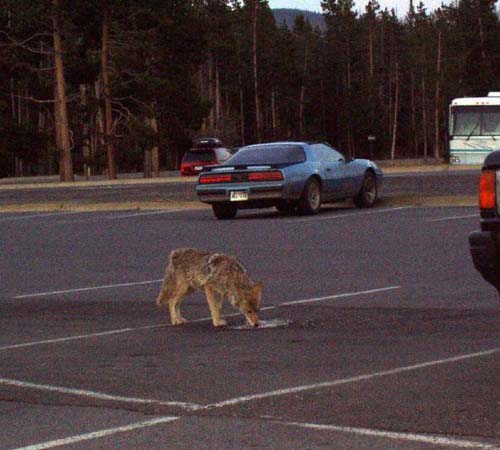
| Yellowstone National
Park Visit July - August 2003
Coyote lapping up some spilled ice cream in the parking lot at Old Faithful |

| This coyote was making
a nuisance of himself in the parking lot scrounging food that careless
visitors had spilled. A ranger would shoo him away, and he would
retreat to another spot out of the rangerís view. Earlier we spotted
a couple of coyotes along a road, but they we quite skittish, unlike this
street-wise one in the parking lot!
The
following is from a park publication:
Coyote-Human
Interactions
Beginning in 1988, park staff increased monitoring of coyotes along park roadsides. We experimented with scaring unwary coyotes from visitor use areas with cracker shell rounds, bear repellent spray, or other negative stimuli, but there is little indication that such techniques caused long-term term changes in individual coyote behavior. Those animals that continue to pose a threat to themselves or to humans may be translocated to other areas of the park, or even removed from the park ecosystem. Signs, interpretive brochures, and park staff continue to remind visitors that coyotes and other park wildlife are wild and potentially dangerous. They should never be fed or approached too closely, for the protection of humans and the animals. |